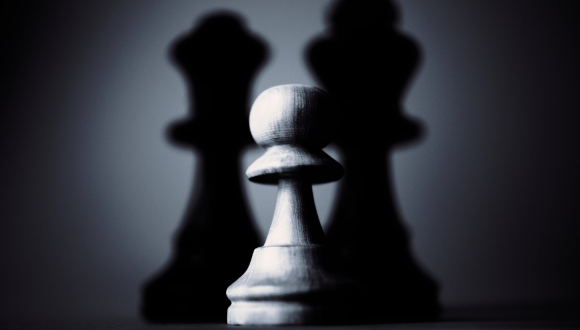Chess History
Discover the history of chess—from its ancient origins as Chaturanga in 5th-century India, , to its evolution in medieval Europe.



History of Chess
Chess has captivated minds for over a millennium. The game’s origins trace back more than 1,500 years to northern India, where an early form called Chaturanga emerged around the 6th century CE. Chaturanga (Sanskrit for “four divisions,” referring to infantry, cavalry, elephants, and chariots) was a war-themed board game considered the earliest predecessor of modern chess.
From India, chess spread into Persia. There it was called Shatranj. By about the 10th century, the game had traveled through the Islamic world into Europe, carried by traders and conquering armies. As chess crossed continents, it began to take on the cultural flavors of its new homes while retaining its core objective: to corner the enemy king.

Rise of chess in medieval Europe
Once in Europe, chess underwent significant changes to its rules and pieces, especially during the medieval period and the Renaissance. Early European chess was slower and less dynamic than today’s game – for instance, pawns could originally only move one step at a time, and there was no castling move for the king. Piece design also reflected medieval society (kings, queens, bishops, knights, rooks as castles).
Over time, Europeans modified chess to make it faster and more tactical. By the late 15th century, major rule innovations had transformed chess into its modern form:
- Powerful Queen: The formerly modest “counselor” piece in Shatranj was reinvented as the queen, now able to move any number of squares in any direction. This change made the queen the most powerful piece on the board and greatly sped up the game.
- Swift Bishops: The bishop (replacing the ancient “elephant” or alfil) gained the ability to run along diagonals over unlimited distances, instead of a short leap. This, along with the queen’s new powers, meant attacks could develop much more quickly than before.
- Pawn Double-Step & En Passant: Pawns were allowed to move two squares on their first move (instead of one), a rule that first appeared by the late Middle Ages. To prevent this faster pawn from simply bypassing enemy pawns, the en passant capture rule was introduced: if a pawn jumped two squares past an opposing pawn, the opponent could capture it “in passing” as if it had moved only one square
- Castling: A special move called castling was developed, letting the king shuffle toward a rook and the rook hop to the other side of the king in one move. Castling helped players safeguard their king and develop the rook simultaneously. This rule, along with en passant, was one of the last major additions to European chess; although both were known by the 15th century, they only became universally accepted by the 18th century

Medieval Chess Pieces
Some of the most famous historical chess artifacts are the Lewis Chessmen (12th century), discovered on the Isle of Lewis in Scotland. These carved walrus-ivory pieces – depicting kings, queens, bishops, knights, rooks as armored warders, and pawns as small standing figures – illustrate how widespread chess had become in medieval Europe. By this era, the game was known as the “royal game,” enjoyed by nobility and commoners alike, and its evolving rules were making play ever more engaging.

The “Match of the Century” – 1972
Fast-forward to the 20th century: chess had grown into a global competitive sport. One landmark event was the 1972 World Chess Championship in Reykjavík, Iceland, often dubbed the “Match of the Century.”
In this high-profile Cold War showdown, American grandmaster Bobby Fischer faced Soviet World Champion Boris Spassky. Fischer’s victory not only earned him the world title but also ended the Soviet Union’s 24-year dominance of top-level chess competition.
The image of a lone American genius defeating the dominant Soviet chess machine captivated a worldwide audience unlike anything seen before in chess. Chess suddenly commanded front-page headlines, and the Fischer-Spassky match became symbolic of Cold War rivalry as well as a triumph of individual brilliance. Their games and the drama surrounding them sparked a boom in global interest in chess, inspiring countless new players.
Magnus Carlsen and the Modern Era
In the 21st century, chess continues to thrive, and champions still capture public imagination. Magnus Carlsen of Norway, born in 1990, stands out as the modern era’s most influential player.
Carlsen became World Chess Champion in 2013 at the age of 22, and he went on to dominate the chess world for the next decade. Renowned for his intuitive and tenacious playing style, Carlsen has achieved milestones that underline his impact on the game.
He earned the highest chess rating ever recorded (an Elo rating of 2882 points), surpassing even former champions in peak performance. He also held the world No.1 ranking continuously since 2011, , a streak second only to the legendary Garry Kasparov’s reign.
Often called the “Mozart of chess” for his natural talent, Carlsen has shown a versatility across classical, rapid, and blitz formats. His reign as world champion (2013–2023) and his ongoing excellence have cemented his status as one of the greatest players of all time. Importantly, Carlsen’s prominence and sportsmanship have helped keep chess in the global spotlight. He has inspired a new generation of enthusiasts to take up the game, proving that the legacy of chess — from ancient Chaturanga to today’s digital age — continues to evolve in exciting ways.
Conclusion
Today, chess continues to evolve and it must be said that the game has the largest community in the world, around 600,000,000 players. The advent of computers and online platforms has changed teaching, training and competition.
The degree of chess strategy has become deeper, with new openings, defenses and endgames constantly appearing. But even with all the technology, chess retains its timelessness. The essence remains the same: two minds in conflict at chess board, matching attack and defense. It teaches critical thinking, decision-making and the fine art of patience.
In short, chess has passed through centuries, civilizations and media, changing but never losing its intellectual essence.




